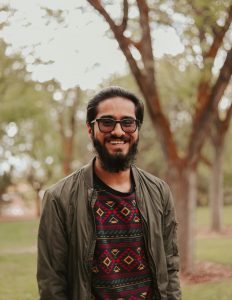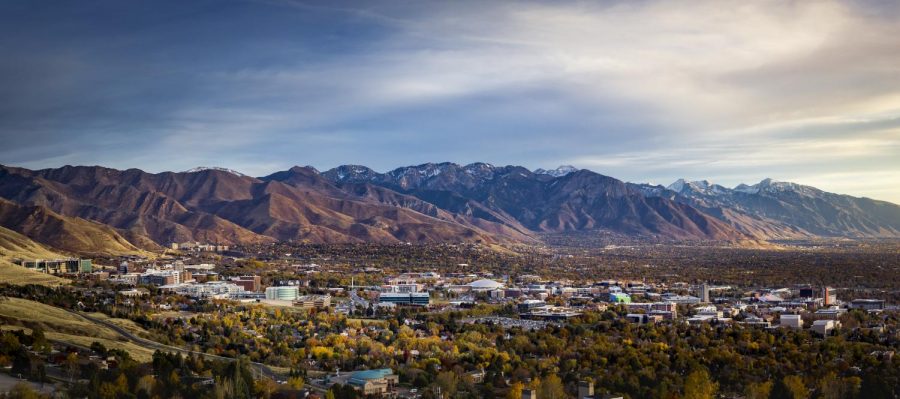Diversity on Campus: Highlighting International Students Stories
October 14, 2019
With over fifty countries represented at the University of Utah, diversity on campus is an integral piece to a well-rounded and comprehensive education. Over 2,400 international students attend the U, making up 7.3% of the student population. Although international students don’t make up the majority of students on campus, their stories are essential in representing the U.
Rewant Verma is an international student from Jubail, Saudi Arabia, studying for his master’s in Entertainment Arts and Engineering. Rewant was born in Oman, Muscat and grew up living in multiple countries throughout the middle east. He recently completed his bachelor’s degree in Dubai before coming to the U to pursue his Masters.
“After the first month, I was used to the lifestyle and felt a little [more at home].” Verma said about his transition to the United States, “I’d say a big part of that would have to do with the friends I met, as they kept me company and I never felt left out.”
The International Student and Scholar Services office takes their role seriously in providing a supportive and inclusive environment for international students acclimating to life on campus. “The U has played a major role in my transition from Asia to the United States. Whether it’s the amazing people I have met on campus and had them as friends, or the scenic mountains and gorgeous valley views, or the various facilities available on campus for students, I have always felt like the U had a place for me and had an answer to any of my needs.”

Verma reflected on the cultural differences he faced when first arriving in the States. “Back in Asia, I was mostly a part of Indian schools, and it is considered derogatory to call your faculty by their first name. Instead, you’d use call them by their titles. For example, sir, ma’am, doctor, professor,” he said. “I wasn’t used to students from so many cultures and backgrounds converging into one classroom. Back home, there were majorly one or two different races or cultures at max. But over here, we don’t just have a mix of cultures, but also color, race, age, and even gender. I am so glad I got exposure to such wonderful diversity.”
One of the biggest challenges both international and domestic students face is homesickness. “No matter how old I grow and how independent I get, I will always miss my family. No matter how much fun I’ll have with my friends, I’ll always miss my brothers. No matter how tasty the food I eat here might seem, I’ll always miss the taste of my mom’s homemade naans and sabzis. But most of all, whenever I am working hard towards my goals, I always miss the nonchalant, relaxed atmosphere that I would experience at home.”
Verma’s experiences and background bring a needed contribution to the ever-evolving diversity on campus. Like Verma, Enkhjin Ganbaatar is an international student attending the U. Enki is currently a junior majoring in Environmental and Sustainability Studies. Enki is from Ulaanbaatar, Mongolia where she grew up with her two sisters and brother. She is the only member of her family not living in Mongolia and has struggled with being away from them.
“Since I have never lived far away from my family before and it was my first time coming to the U.S. when I came here for school, my transition was challenging. I had a hard time making friends and getting used to the American culture,” Enki said, “In my freshman year, I got homesick and had a lot of challenging times, but after all those challenges, I am doing just fine now. I have friends, I have work and I have a community that supports me. Also, I know who I should talk to and what I should do when I need help and support.”

One of the biggest cultural differences Enki had to adjust to was phone calls. “When I was back in my home country, I used to make phone calls a lot. Whether it is a co-worker, friend, or teacher, it is totally fine to make a phone call back in my home country. However, in the U.S., making a phone call seemed kind of rude since everyone is busy. People are more into texting and writing an e-mail here, while a lot of people from my home country just makes a phone call.”
Enki reminisced about Mongolian food and how much she misses her family. Her biggest help in transitioning to these struggles was in joining various student organizations and clubs around campus, “I think it is the people that I have met outside of the classroom who have really helped me to learn the American culture and made me feel like I also belong here. I am in the International Student Council and the Mongolian Students Association. Also, I work as an International Ambassador to help the incoming International Students to transition to life in Utah.”
The cultural insight gained from both Rewant and Enki’s perspectives is invaluable to campus life, which is why the inclusion of all cultures and backgrounds on campus is a priority to the ISSS. The ISSS works with international students to ensure a safe, supportive and social transition to the U.
“All international students are required to attend International Student Orientation at the beginning of their first semester,” said ISSS Orientation Coordinator Danika Borcik. “We talk specifically about cultural adjustment, expectations and norms of the American classroom and campus resources that can assist them if they find themselves struggling to adjust. We also provide an Information Fair during orientation where we invite campus organizations, student clubs and local vendors (cell phone providers, banks, car rental services, etc.) to come share how they can help students acclimate to life in Salt Lake City.”
The ISSS has also created programs open to both international and domestic students which focus on helping international students make friends and build support systems throughout the U.
“The International Student Council and the International Student Ambassadors [programs] plan fun events to help students socialize with each other outside the campus environment, such as hiking, bowling, bonfire parties and even going to Lagoon Amusement Park,” Borcik said. During International Student Orientation and throughout the semester, we encourage students to participate in these activities, particularly if they are feeling homesick or isolated.”
Cultural diversity and insight are an integral piece to education at the U. Sharing the stories of students and their experiences is an important aspect of that. The ISSS works in providing ample resources for acclimating, succeeding and socializing during international students’ transition to the U.
“We have enormous opportunities on our campus to help students to succeed and if you can use all those opportunities, you will not struggle that much in your college life,” Ganbaatar said. “The most important thing as an international student is to seek help in any kind of situation because there are a lot of people and a lot of offices who are there to help you.”
If you’d like to get more information or get involved with the ISC or ISA programs visit their website.








